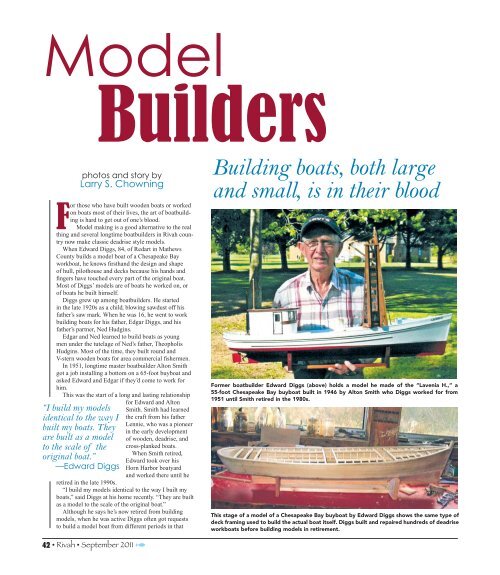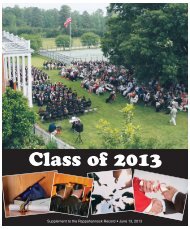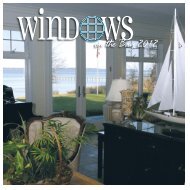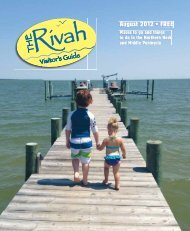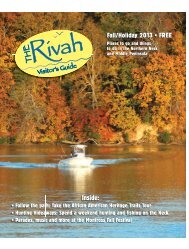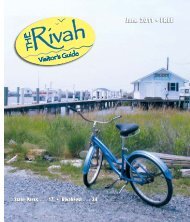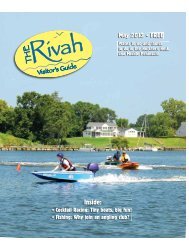September Rivah Visitor's Guide - The Rappahannock Record
September Rivah Visitor's Guide - The Rappahannock Record
September Rivah Visitor's Guide - The Rappahannock Record
Create successful ePaper yourself
Turn your PDF publications into a flip-book with our unique Google optimized e-Paper software.
Model<br />
Builders<br />
photos and story by<br />
Larry S. Chowning<br />
For those who have built wooden boats or worked<br />
on boats most of their lives, the art of boatbuilding<br />
is hard to get out of one’s blood.<br />
Model making is a good alternative to the real<br />
thing and several longtime boatbuilders in <strong>Rivah</strong> country<br />
now make classic deadrise style models.<br />
When Edward Diggs, 84, of Redart in Mathews<br />
County builds a model boat of a Chesapeake Bay<br />
workboat, he knows firsthand the design and shape<br />
of hull, pilothouse and decks because his hands and<br />
fingers have touched every part of the original boat.<br />
Most of Diggs’ models are of boats he worked on, or<br />
of boats he built himself.<br />
Diggs grew up among boatbuilders. He started<br />
in the late 1920s as a child, blowing sawdust off his<br />
father’s saw mark. When he was 16, he went to work<br />
building boats for his father, Edgar Diggs, and his<br />
father’s partner, Ned Hudgins.<br />
Edgar and Ned learned to build boats as young<br />
men under the tutelage of Ned’s father, <strong>The</strong>opholis<br />
Hudgins. Most of the time, they built round and<br />
V-stern wooden boats for area commercial fishermen.<br />
In 1951, longtime master boatbuilder Alton Smith<br />
got a job installing a bottom on a 65-foot buyboat and<br />
asked Edward and Edgar if they’d come to work for<br />
him.<br />
This was the start of a long and lasting relationship<br />
“I build my models<br />
identical to the way I<br />
built my boats. <strong>The</strong>y<br />
are built as a model<br />
to the scale of the<br />
original boat.”<br />
––Edward Diggs<br />
for Edward and Alton<br />
Smith. Smith had learned<br />
the craft from his father<br />
Lennie, who was a pioneer<br />
in the early development<br />
of wooden, deadrise, and<br />
cross-planked boats.<br />
When Smith retired,<br />
Edward took over his<br />
Horn Harbor boatyard<br />
and worked there until he<br />
retired in the late 1990s.<br />
“I build my models identical to the way I built my<br />
boats,” said Diggs at his home recently. “<strong>The</strong>y are built<br />
as a model to the scale of the original boat.”<br />
Although he says he’s now retired from building<br />
models, when he was active Diggs often got requests<br />
to build a model boat from different periods in that<br />
Building boats, both large<br />
and small, is in their blood<br />
Former boatbuilder Edward Diggs (above) holds a model he made of the “Lavenia H.,” a<br />
55-foot Chesapeake Bay buyboat built in 1946 by Alton Smith who Diggs worked for from<br />
1951 until Smith retired in the 1980s.<br />
This stage of a model of a Chesapeake Bay buyboat by Edward Diggs shows the same type of<br />
deck framing used to build the actual boat itself. Diggs built and repaired hundreds of deadrise<br />
workboats before building models in retirement.<br />
42


